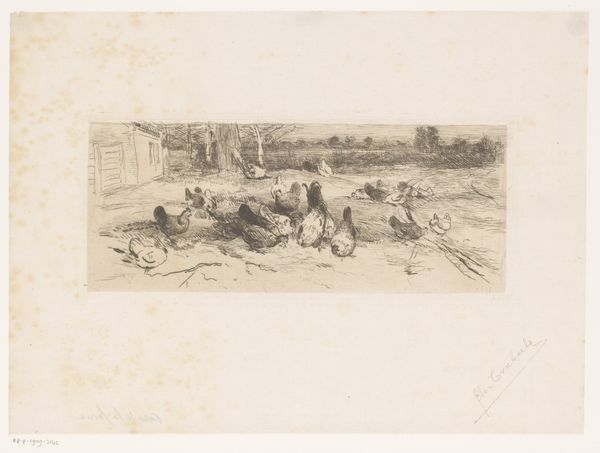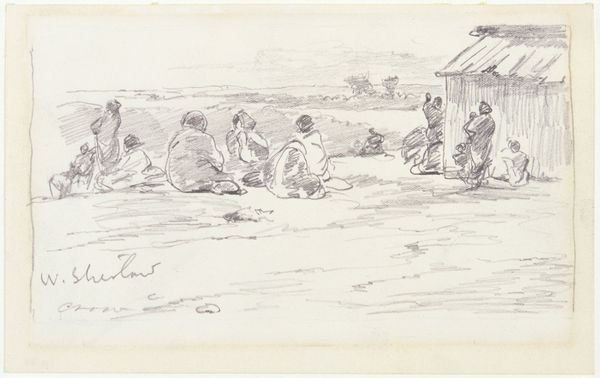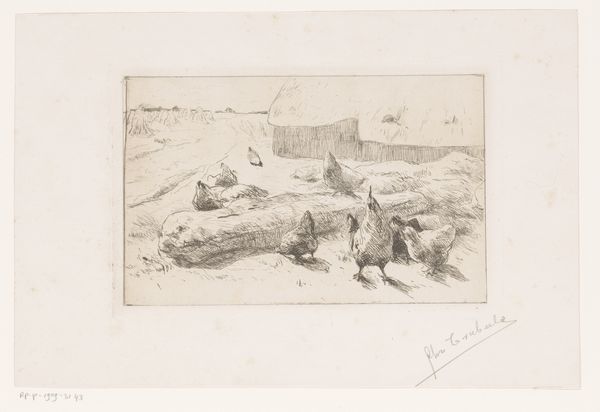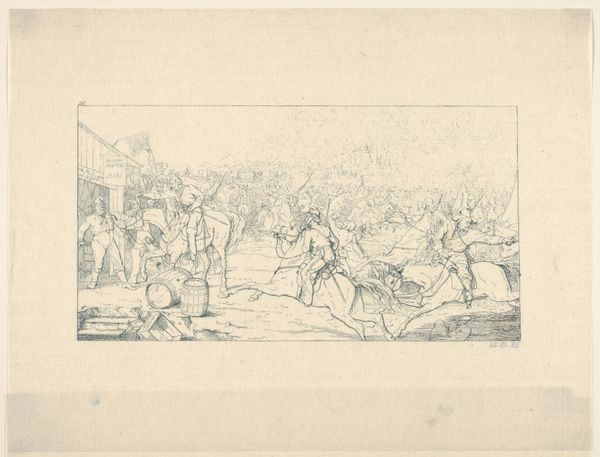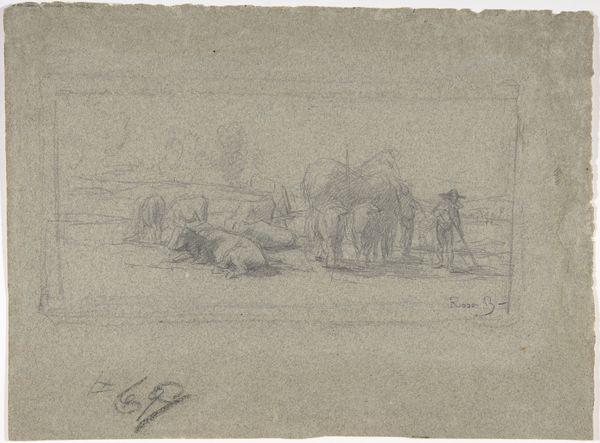
print, etching
# print
#
etching
#
landscape
#
etching
#
genre-painting
#
realism
Dimensions: height 130 mm, width 300 mm
Copyright: Rijks Museum: Open Domain
Curator: Florent Nicolas Crabeels' etching, "Chickens in the Grass Along a Road," likely created sometime between 1839 and 1896, offers us a glimpse into rural life during that era. What's your immediate impression? Editor: A bit somber, actually. The monochromatic palette gives it a sense of muted realism. It feels like a stark, unidealized snapshot. I’m struck by the contrast between the domestic scene and what looks like a pretty desolate background. Curator: It is certainly a departure from romanticized landscapes. Crabeels, deeply rooted in Realism, focuses on capturing everyday scenes, often presenting unembellished views of peasant life and the countryside. He really seemed to be interested in democratizing imagery by focusing on these more commonplace aspects of life. Editor: And within that democratized vision, who is represented and how? The chickens, for example, feel almost allegorical. Are they meant to represent a certain segment of society—those scrabbling for survival in a difficult landscape? There's an undeniable sense of labor, even if it's the everyday work of foraging for food. Curator: That's an insightful point. In the context of the time, we must consider the rise of industrialization and the subsequent shift of populations towards urban centers. Artists like Crabeels presented rural life in ways that encouraged city dwellers to reflect upon the simple charms and harsh realities that remained in the countryside. Chickens would not have the symbolic weight afforded to livestock that was tied up with financial and physical sustenance for the farmers of that era. They would, however, offer us insights into local market systems. Editor: So, he’s using the rural to comment on societal shifts? Even these unassuming chickens by the roadside underscore a critical political commentary, highlighting the stark realities of that existence. We can think about class divisions or gendered labor if we explore further! Curator: Absolutely. It is a modest image, and yet when we position this piece within a wider social, economic, and political discourse, its impact and value significantly grow. Editor: It definitely underscores how art can serve as a subtle, yet powerful form of social commentary, sparking dialogue on themes that still resonate. Thank you!
Comments
No comments
Be the first to comment and join the conversation on the ultimate creative platform.

